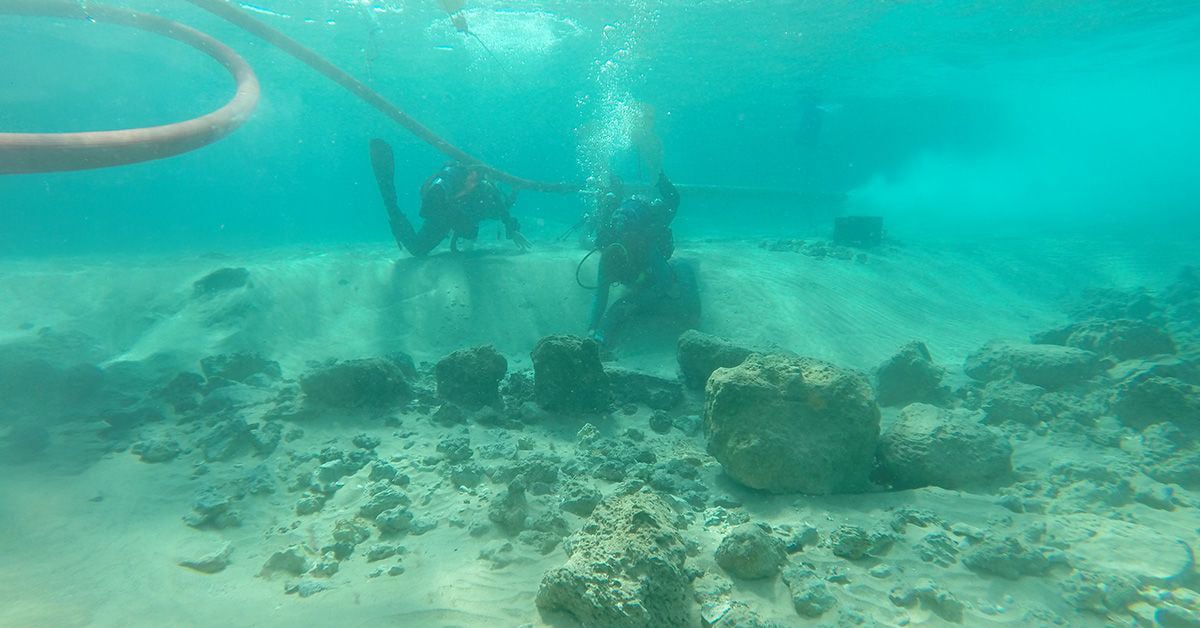Secrets of mysterious village that defied Stone Age climate crisis revealed
Ancient village thrived during climate crisis from maritime culture and trade, researchers say
Your support helps us to tell the story
From reproductive rights to climate change to Big Tech, The Independent is on the ground when the story is developing. Whether it's investigating the financials of Elon Musk's pro-Trump PAC or producing our latest documentary, 'The A Word', which shines a light on the American women fighting for reproductive rights, we know how important it is to parse out the facts from the messaging.
At such a critical moment in US history, we need reporters on the ground. Your donation allows us to keep sending journalists to speak to both sides of the story.
The Independent is trusted by Americans across the entire political spectrum. And unlike many other quality news outlets, we choose not to lock Americans out of our reporting and analysis with paywalls. We believe quality journalism should be available to everyone, paid for by those who can afford it.
Your support makes all the difference.An underwater excavation by archaeologists off Israel’s Carmel Coast has uncovered an ancient village that not just survived but thrived during a period of climate crisis around 6,200 BC.
The discovery could shed more light on the resilience of the people living in the coastal regions around the Levant and Easter Mediterranean during this Stone Age climate crisis, according to researchers.
Scientists previously thought an abrupt shift in global climate during this period led to the widespread abandonment of coastal settlements around the Mediterranean.
But the new findings suggest at least one village formerly thought abandoned, not only remained occupied but thrived throughout this period.
“It deals with human resilience,” Thomas Levy, a co-author of the study from the University of California San Diego, said.
The Habonim North was first discovered off Israel’s Carmel Coast in the mid-2010s and early surveys offered scant evidence of human habitation along the coast during the ancient climate crisis period known as the 8.2ka event – an event lasting 8,200 years.
Then during Covid-19 lockdown period, researchers conducted a more thorough excavation at the site.
Archaeologists uncovered signs of architecture, pottery shards, stone tools, ceremonial weapons and fishing net weights as well as plant and animal remains.
Researchers also recovered bones of wild and domesticated animals, charred seeds of wild plants, fossils of crops like wheat and lentils, and weeds that accompany these crops.
The organic materials were dated back to the Early Pottery Neolithic (EPN), which coincided with both the invention of pottery and the 8.2ka event.

Surprisingly, scientists could date activity at the site even to the Late Pottery Neolithic, when the village was previously thought to have been abandoned due to climate change.
Artefacts uncovered at the site such as tools made of basalt – a stone that does not naturally occur along this part of the Mediterranean coast – and a ceremonial mace head suggest the people were likely involved in maritime trade.
The findings point to signs of a village economy that diversified from farming and thrived during this climate crisis period from maritime culture and trade with a distinct cultural identity.
“[The study] showed that the Early Pottery Neolithic society [at Habonim North] displayed multi-layered resilience that enabled it to withstand the 8.2ka crisis,” study senior author Assaf Yasur-Landau said.
Scientists speculate that the climate crisis event was triggered by the final collapse of the Laurentide ice sheet, which shaped much of the North American landscape.
As this ice sheet melted, they say it likely changed the flow of ocean currents worldwide, affecting heat transport and causing a drop in global temperatures.
Now the discovery of a lasting and evolving society through this period of climate instability indicates a level of never-before-seen resilience in early Stone Age societies.
“Many archaeologists like to look at the collapse of civilizations. Maybe it’s time to start looking at the development of human culture, rather than its destruction and abandonment,” Roey Nickelsberg, another author of the study, said.
Join our commenting forum
Join thought-provoking conversations, follow other Independent readers and see their replies
Comments